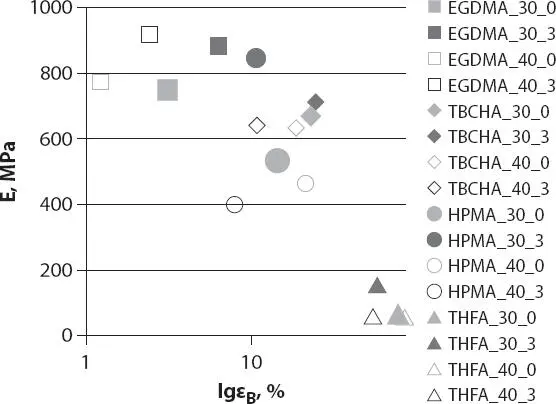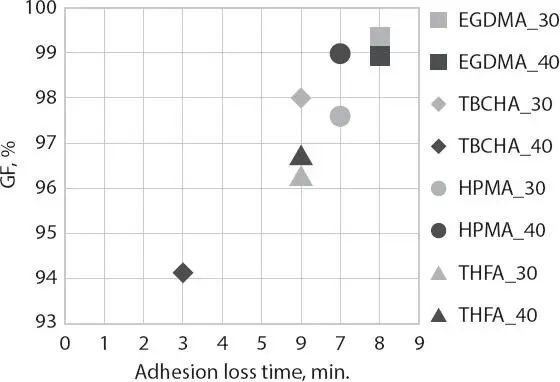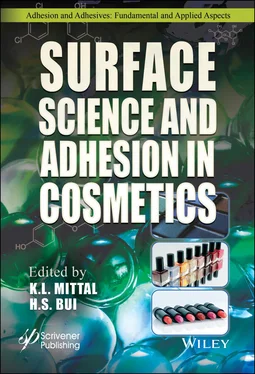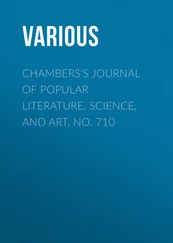** AG = (G 0– G)
*** AHV = (HV Q– HV)
**** Characteristics in bold are in required range of close to that

Figure 3.17 Elastic modulus (E)and (%) elongation at break (ɛ B) values for the coatings with 30% and 40% of monomers measured immediately after cure (0) and after 3 days of storage.
They also found that the human nail at 55% relative humidity has a Young’s modulus of 2.32 GPa. Systems containing TBCHA that they tested showed the most stable E values with the post-cure having no effect on the post-cured coatings. So, for the natural nail the coating should have at least an ɛ B(elongation at break) value of 0.6%. As can be seen in Figure 3.17TBCHA and HPMA fall within the range of the recommended 20-50% for a coating performance that was not too brittle yet not too soft for a coating to perform on the nail plate [21].
3.9 Adhesion of UV Nail Gel to the Human Nail Plate
Adhesion is another area of concern for the application of UV nail gel polish. In one aspect the user wants high adhesion for 2-4 weeks when subjected to dish washing detergents, hand cleaners, hand creams and a whole host of other chemicals that will cause the UV nail gel to lose adhesion. On the other hand, the user wants the UV cured coating to be removed quickly when fashion changes require it. Testing was accomplished by doing soak-off (in solution of 95% acetone and 5% water) that was performed for 72 hours and the results can be seen in Figure 3.18.

Figure 3.18 Correlation of gel fraction data (after 72 hours of soak-off) of the compositions with the adhesion loss time from the substrate in a solvent medium (95% acetone and 5% water).
The results correlated with the GF data obtained after the 72-hour of soak-off. The researchers found that the formulation containing the 30% THFA showed the quickest adhesion loss in 3 minutes. This result of the 30% THFA also correlates with the smallest GF value [21].
A very recent US Patent issued [22] teaches this new technique for improved adhesion to the human nail. As can be seen in Table 3.8the improvement over the control shows that the addition to the base UV nail gel formulation of the polyhedral oligomeric silsesquioxane (POSS) increased the adhesion from 71% to 125%. The adhesion test was performed utilizing the Cross-Hatch Adhesion Test according to ASTM D3359 [22].
Table 3.8 Improved adhesion to the human nail using a UV curable nail gel formulation with the addition of polyhedral oligomeric silsesquioxane (POSS). Testing was performed using ASTM D3359 Cross-Hatch Adhesion Test.
| Formulation# |
Average adhesion score |
Improvement over Control |
| 1 |
3.0 |
71% |
| 1 Control |
1.75 |
– |
| 2 |
2.25 |
125 |
| 2 Control |
1.0 |
– |
3.10 Removal of the UV Nail Gel From the Human Nail Plate
UV nail gel technology has an issue with the removal from the human nail. All the technology developed that we have discussed so far relates to the ability to create a heavily crosslinked coating that can remain on the human nail for over two weeks without chipping or peeling [23]. However, this heavily cross-linked UV cured coating now results in a coating that is difficult to remove either by using a solvent soak or by mechanically grinding it away. Cook [24] has developed technology that allows the coating to UV crosslink but utilizes an ‘Achilles heel’ in the polymer backbone so when the user wants to remove the nail gel coating it will not require excessive efforts. This technology teaches that if one uses a photopolymerizable cellulose ester as the ‘Achilles heel’ then removal should require far less effort than what is traditionally needed. As can be seen in Table 3.9the use of the photopolymerizable cellulose ester in a potential UV nail gel application results in a coating after UV curing that shows solubility in the acetone soak yet still retains the MEK (Methyl Ethyl Ketone) double rubs needed from a performance aspect.
Other formulations in Table 3.9have higher crosslinking but would require much removal efforts. Unfortunately, all of this work was done using high performance UV cure light technology that we have described earlier and would need to be reformulated to meet the needs of the lower UV energy GA-FL and LED UV cure light technology [24]. Another approach for the removal of UV cure nail gels is the use of an alkoxylated lanolin oil and acetone. The art taught in this recent patent claims that this system based on 2.5% alkoxylated lanolin oil in acetone was able to remove UV cure nail gel within 168 seconds (2.8 minutes) [25].
3.11 Alternative Uses of UV Cured Nail Gels as a Solution to Remedy Onychomycosis (Toenail Fungus)
Up until this point our discussion has centered around the beautification of the human nail by way of UV nail gel. An alternative technique has been developed that would allow the UV nail gel to be the carrier for transporting drugs that are needed to treat certain toenail diseases such as onychomycosis.
Researchers [26] in this case utilized the Curanail coating (32 wt.% Amorolfine HCl UV-cured coating), 3 wt.%. Amorolfine HCl UV-cured coating, and 4 wt.%. Terbinafine HCL UV-cured coating as shown in Table 3.10. The study was carried out using human nail secured from patients ages 18 to 65 years. The permeation study was carried out and the results are shown in Table 3.10whereby all anti-onychomycotic drugs penetrated the nail plate delivering the agent to terminate the fungus. The major benefit here is the long residence time that the anti-onychomycotic drug is able to stay on the nail plate delivering it over a long period of time. It is obvious that other traditional topical therapy would not last as long due to the environment that the nail plate resides in [26].
Table 3.9 Photopolymerizable cellulose esters that act as the ‘Achilles heel’ in the UV cure nail gel polymer allowing easy removal of the coating by acetone soak yet maintaining MEK double rub performance. The acetone solubility test is carried out by immersing a dry, pre-weighed sample of the coating in acetone for 48 hours at 25°C. The coating is removed, dried for 16 hours at 60°C in a forced-air oven, and reweighed. The weight percent of the insoluble coating remaining is calculated from the data.
| Cellulose Ester Type |
Pencil Hardness |
Acetone Insolubles Wt.% Film Recovery |
MEK Double Rubs |
| CA 320S (Control) 1 |
F |
0 |
<10 |
| CAP 504 (Control) 1 |
HB |
0 |
<10 |
| CAB 553 (Control) 1 |
2B |
0 |
<10 |
| Nitrocellulose (RS ½ sec.) 1 |
3B |
0 |
<10 |
| CA Maleate (0.32 DS) |
H/2H |
94 |
>200 |
| Sample 1 |
| CAP Maleate (0.10 DS) |
F |
42 |
98 |
| Sample 2 |
| CAP Maleate (0.25 DS) |
H |
90 |
>200 |
| Sample 3 |
| CAP Maleate (0.39 DS) |
H/2H |
94 |
>200 |
| Sample 4 |
| CAP Maleate (0.46 DS) |
H |
91 |
>200 |
| Sample |
| CAB Maleate (0.41 DS) |
H/F |
92 |
>200 |
| Sample 6 |
| CAP Methacrylate (0.52 DS) |
H/F |
31 |
91 |
| Sample 7 |
| CAP Acrylate (0.25 DS) |
F |
43 |
62 |
| Sample 8 |
| CAB Methacrylate (0.40 DS) |
F |
48 |
109 |
| Sample 9 |
| CAB Acrylate (0.20 DS) |
F |
29 |
41 |
| Sample 10 |
| CAP TMI (0.59 DS) |
2H |
82 |
>200 |
| Methacrylate (0.30 DS) |
|
|
|
| Sample 11 |
| CAB TMI (0.62 DS) |
H |
88 |
>200 |
| Methacrylate (0.2 DS) |
|
|
|
| Sample 12 |
Sample 8 (CAP Acrylate (0.25) might be a good candidate for GAL-FL or LED. (Control) 1: Not formulated, (DS): degree of substitution per glucose ring.
Читать дальше














